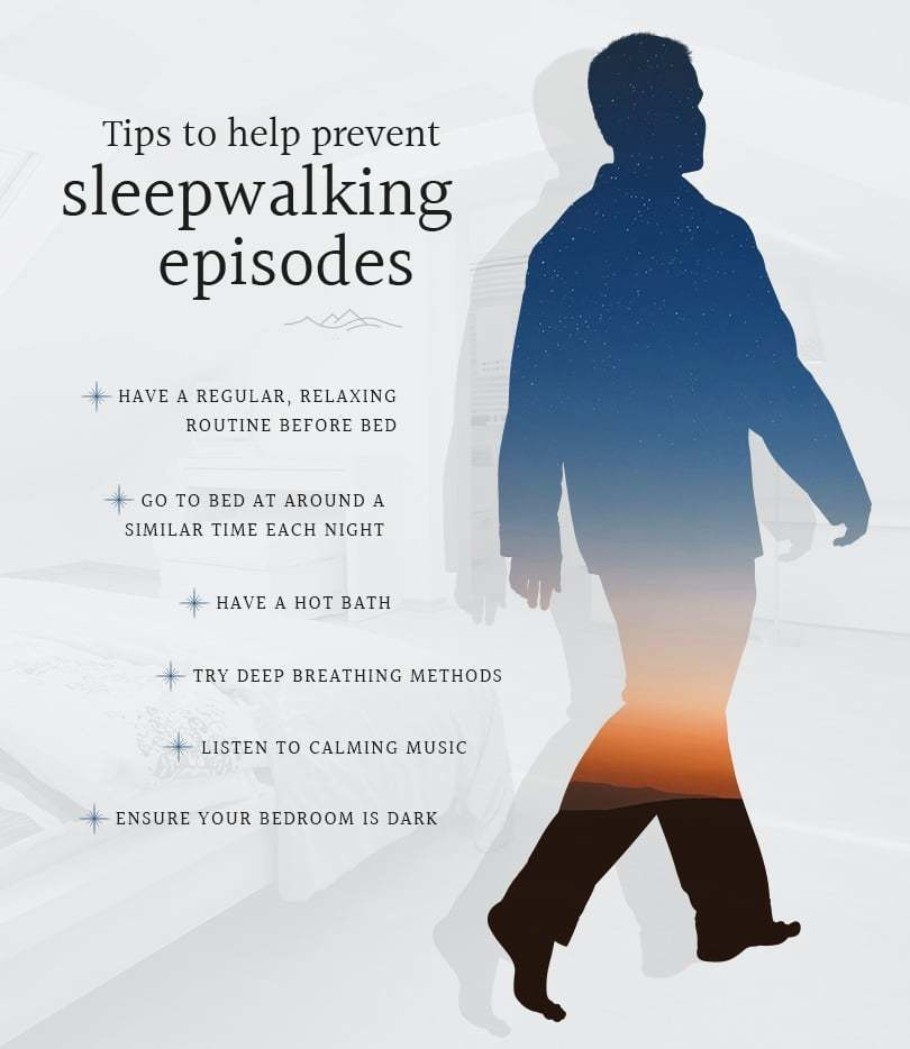Sleepwalking: Why Do People Sleepwalk & What Causes It?
23rd January 2020
Slumber Centre
Throughout the ages sleepwalking has always been something of a mystery; it’s believed it wasn’t studied in any great detail until the 19th century, when German chemist Baron Karl Ludwig von Reichenbach carried out extensive research. Sigmund Freud also voiced his opinions on sleepwalking in his published works, outlining his amazement a person could move without interrupting their dream.
William Shakespeare even used sleepwalking to create one of the most famous scenes in all of literature, from the tragic play Macbeth. Throughout history there is even documented evidence to suggest sleepwalking has been used as legal defence for a number of different crimes, one of the earliest documented cases was from 1846. Sleepwalking still features in court today, such as Brian Thomas who in 2008 was accused of killing his wife while he dreamt she was an intruder on holiday in Wales; he was found not guilty.
So, what is sleepwalking and why has it caused so much mystery over the years?
To put it simply, sleepwalking is when someone walks or carries out complex activates while not fully awake.
Sleepwalking, also known by its more official name ‘somnambulism’, usually happens when a person is transitioning into deeper sleep, therefore more likely to occur during the first few hours of falling asleep.
You can start sleepwalking at any age, although more common in children where it is believed at least 20% of children will sleepwalk at least once.
Most children will grow out of sleepwalking by the time they hit puberty, however it can also persist into adult life.
What happens when you sleepwalk?
Sleepwalking episodes can vary from person to person in terms of the activity taken place. A common episode is to simply sit up in bed and look around, while others may get up and go for a walk.
This can involve carrying our usual tasks such as looking in the fridge, making food, getting dressed; however others have shared stories of more extreme cases of sleepwalkers doing more complex activities such as driving a car!
Although the eyes are usually open, if you look at a sleepwalker they will more than likely have a glazed look on their face, almost as though they are looking straight through you.
Despite this sleepwalkers are usually very mobile and can manoeuvre around familiar obstacles.
Sleepwalkers may also talk, however if you try to talk to a person who is sleepwalking the chances are they may only partially respond and if they do it might not make much sense.
Typically a sleepwalking episode may only last up to 10 minutes; however it can of course be longer. Most sleepwalkers will simply return to bed or wake up.
They will then wake with a patchy memory in the morning or have no recollection of the episode at all.
If you wake while you are sleepwalking you may feel very confused and struggle to remember what just happened.

Tips to prevent sleepwalking episodes
How to approach someone if you find them sleepwalking:
- It’s always advised not to confront or startle someone who is sleepwalking as it’s possible they could lash out.
- The main thing is to ensure they are safe, so simply lead them back to bed and reassure them with a calm voice.
- If they feel undisturbed, it’s highly likely they will just go back to sleep again. It is possible however to gently wake a person after they have fully come out of a sleepwalking episode before they go back to sleep, which will then hopefully mean they won’t go back into another episode in the same deep sleep cycle.
What causes sleepwalking?
Still to this day the reason why we sleepwalk is a bit of a mystery – scientists still don’t have a concrete answer.
There does however appear to be a correlation with family members, as you are more likely to sleepwalk if other members of your close family have experienced sleepwalking behaviour or night terrors.
Sleepwalking is also believed to be very common with identical twins. There are also a number of other causes of sleepwalking such as:
- Sleep deprivation
- Certain types of medication
- Stress or anxiety
- High consumption of alcohol or taking recreational drugs
- A common cause in children is infection with a fever
There are however other types of sleep disorders that can also cause you to frequently wake suddenly such as restless leg syndrome and obstructive sleep apnoea, both of which can trigger a sleepwalking episode.
Are there any treatments for sleepwalking?
Unfortunately there are no specific treatments for sleepwalking, however there are a few tips to help prevent sleepwalking episodes:
- Try have a regular, relaxing routine before bed – going to bed around a similar time every night can be a big help
- Try relaxation techniques such as going for a hot bath, deep breathing methods and listening to calming music before bed
- Ensure your bedroom is as dark as possible and an overall relaxing environment
- If your child sleepwalks at a regular time, a technique you could try is gently waking them for a short time 15 – 30 minutes before they would normally sleepwalk, this can then help prevent sleepwalking in the future by altering their normal sleep cycle
Having the occasional sleepwalking episode shouldn’t on most occasions require medical attention.
However you should consider consulting your GP if episodes occur frequently and you are concerned about potential injury. It’s possible your GP may refer you to a sleep specialist.
